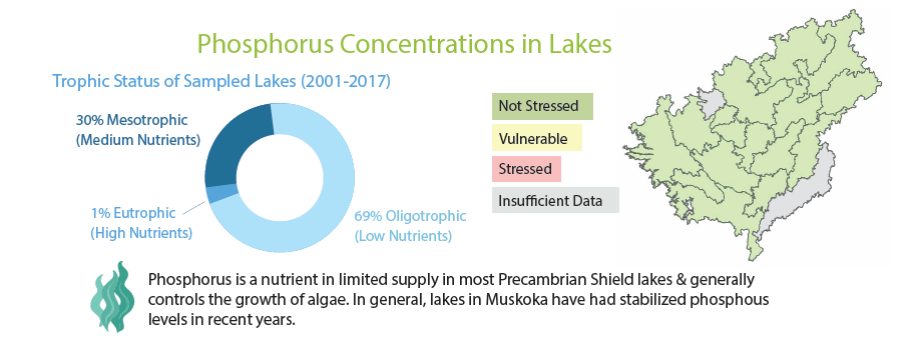Total Phosphorus? Totally Cool!

The 2018 Muskoka Watershed Report Card produced by the Muskoka Watershed Council features 8 different indicators of watershed health. Total Phosphorus is one of these indicators, categorized as a health indicator rather than a threat indicator.
Phosphorus is a nutrient that is in limited supply in most lakes in Ontario. It greatly influences the amount of algae within a lake as it encourages the growth of algae. For this reason, a change in phosphorus concentration in a lake can impact the types of algae and the potential for an algal bloom to occur in that given lake. In any watershed, there is a natural variation in phosphorus concentrations from lake to lake due to lake size, flow characteristics, and sources of phosphorus.
Excessive phosphorus concentrations in a lake are usually the result of erosion and runoff from agricultural land that is treated using fertilizers or manure. The introduction of phosphorus into lakes is called nutrient enrichment or eutrophication which causes negative impacts at an ecological scale but also at an economic scale. Once algal blooms occur, people are much less likely to partake in lake activities such as swimming, boating, skiing, etc., causing our tourism industry to decline.
Muskokan’s have been taking great initiative to reduce their phosphorus loading over the recent years. Data records from the previous 30 years show an overall decline in phosphorus concentrations in the Muskoka Watershed. However, some phosphorus concentrations in certain lakes across the watershed are on the rise.
To see how your subwatershed ranks and to learn more about total phosphorus, check out the 2018 Muskoka Watershed Report Card at https://www.muskokawatershed.org/.

